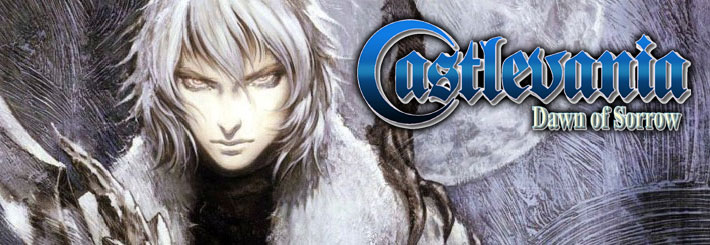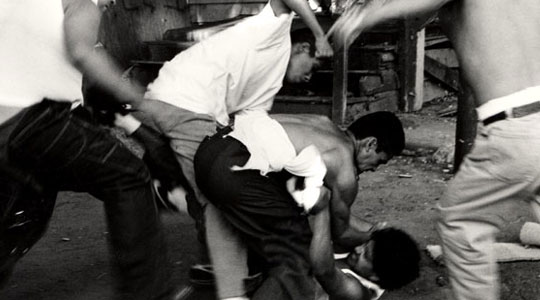Aztez Coming August 1st, 2017! ALL INFO HERE.
We are so happy to to finally be able to say that Aztez is launching on Steam and The Humble Store (PC/Mac/Linux) on August 1st, 2017!
Assuming the game doesn't crash into the mountain on PC, it's coming to PS4/XboxOne/Vita afterward. Technically we're authorized for release on WiiU, but we're going to try and pivot that into a Switch release instead.
Here is everything you should know!
On Bayonetta 2 And “The Secret Game”
Y'all KNOW how I feel about Bayonetta 1; I believe it is the carrier of the greatest combat engine ever built. Imagine my surprise when Bayonetta 2 finally comes out here in North America and it is somehow an improvement in almost every single way. I'm not going to give its own combat analysis, as everything I said about Bayonetta 1 still applies, except now with less cons! But in that first analysis I referenced the "...secret game buried inside of Bayonetta...playing it for a respectable rank". I've since been asked many times about that secret game and instead of writing about I want to show it to you. Now that I have the technology to do this and since I'm already knee deep in Bayonetta 2, I made a video (with tactical commentary) of me playing through the first chapter and obtaining a Pure Platinum rank (the highest you can get) in every fight.
Frame By Frame: The Sword’s Basics
In the interest of both exposing the nitty gritty details of our really powerful combat technology and also sharing some design insight, I'm going to open up some of the sword's basic standing mechanics for viewing at the frame by frame level. Information at the frame level is typically only of interest to the designers or to the master class player types who are operating at competitive levels, but I'm going to try and make this fun and accessible by using (hopefully) easy-to-look-at-and-understand animated timelines. But first, let's take at the game's very first standing sword A attack. It's probably the first attack the player ever sees.
Sword Standing A1

Enemy Study: Castlevania Dawn Of Sorrow
The next major step in Aztez is taking our enemies to the next level. We've had enemies for a long time now, and while they currently have distinct mechanical identities, they're missing a couple crucial features. Some of them I'm going to save for a future post, but the major feature they're missing now is the ability to control YOU, the player. A good friend and design mentor says it best. "Good action games set the pace for the player." What he's referring to the is a game's abilities to raise meaningful hurdles for the player that they must get themselves over in a fun and challenging way. So before I got in there and shook up my enemies in a major way, I wanted to do some studies. The first one has been of Castlevania: Dawn Of Sorrow for the Nintendo DS.

The Pleasure Of Simulated Violence

A critical part of the human brain wants to overcome obstacles. We all know this to be true, because when we successfully overcome something we experience a distinct sense of pleasure. That is our brain sending a message to the body that "Hey yeah that was fucking awesome you should do that more because it make you even more fucking awesome and more likely to LIVE". Our highly evolved neurological systems have come to understand for themselves what is good for you, and this reward process is an iconic example of this. Recall now what it felt like when society graduated you after all that work, or when you experienced your first major professional success, or when you narrowly avoided that terrible thing because of a smart decision you made. So what does this have to do with beat 'em ups?

Three Hours? Why?
At GDC I did an interview for Unwinnable.com. Unwinnable is a great site, by the way! You should like them and read them.
Anyway, I shared the interview on Twitter and my esteemed thought colleague Hamish Todd asked me if I really only ever play beat 'em ups for 3 hours before never touching them again. Then he said that he'd love to know why that is. It's a good question and I'm going to answer it!
Walking And Running Implementation

When analog sticks were born, the way walking and running was implemented in games changed. But before I go into that, it's important to understand the key differences between the joystick on a traditional arcade machine and the little analog stick on your console controller. When you push on an arcade stick, it's pressing down on one or two of four different little buttons that lie underneath the stick. Each button only has two states: pushed and non-pushed. So when you push the stick upward it's going to press on the northern button and when you push the stick up and left it's pressing on both the northern button and the western button. Now when you push on an analog stick, it's cross-referencing two different axises (a "left to right" axis and a "up to down" axis) and the controller is finding the precise location the stick is resting at, which could be anywhere inside that plastic circle your analog stick is poking out of. With all this extra possibility space, you can alter the way the player tells the character on the screen to move. What I'm gonna talk about here is the three major ways this can be done based on the implementation across a handful of different games. The first variant of this is the most straightforward.

On Genre Distinctions

A fascinating subject that came up in the comments of my post about animation issues in Kingdom Of Amalur was about the key distinctions between beat 'em ups and its "cousin" genres. I wanted to quickly elaborate on those splits and changes and touch on the essence of each of them from a game play point of view. I mostly want to answer the question "What is a Beat 'Em Up?" out loud so we can all agree and move on. Haha! But first let's talk about a really important spectrum; the danger level of an individual attack.

Mechanic Analysis: Now In Video Form!
David Rosen over at Wolfire (creators of Lugaru, Overgrowth, and the Humble Bundle) suggested that I make an analysis similar to the ones I usually do here on the blog except in video/spoken format. I figured it was worth a try so I ended up making a couple in the last week: one for Warhammer 40k: Space Marine and one for Darksiders 2. The response was good so I'm sharing them here now and opening it up for feedback. Keep in mind that because of the short video format, I can't go into nearly as much depth as I do in my written analyses, so the videos take the form of a mechanic analysis, where I evaluate the game's mechanics in an open area without enemies. I always do this whenever I get my hands on a combat heavy game for the first time, and I've found this exercise terrifically useful. Anyway, here they are! Let me know what you'd like to see from videos like this in the future.
I will continually update this entry with new videos as I make them. Hit the jump to see the rest!
Links To Great Articles RE: Combat
This is a list of the highly influential articles on game combat that I've collected and sat upon over the years. I should not have been sitting on these for so long! Please dive in and enjoy. If you have anything that you feel should be in this list, please let me know and I'll add it. :)
- Very in-depth article about enemy behavior by Tom Smith, a creative director at THQ.
- Incredible overview of the animation principles at work in Capcom's Darkstalkers.
- Really fun behind-the-scenes vignette on God Of War 3 from some of its key design guys.
- Video interview about combat intent in God Of War 3's development with combat lead Adam Puhl. I've had some email exchanges with Adam and he's a rad dude who knows his stuff.
- Higher level discussion about combat from Jason McDonald, combat designer on God Of War: Ascension.
- Interesting animation-centric discussion on proper sword movement.

A Combat Accessibility Fork

An amazing thing happened in the last stretch of our Mexico work trip! We released a Friends and Family build and the feedback was hugely positive and also very thorough! Now I have a very liberal approach to feedback; if it can be implemented, played with, and marinated on without disrupting the flow of the project I will do it on principle, provided I haven't already explored the issue previously. There have been many minor (and major) pieces of feedback that have improved the game and I think it's a good, albeit authorially uncomfortable policy. Not every piece of feedback is valuable and is worth investigating, but in my experience, MOST are. I wanted to write about this fascinating fork I'm standing at right now with the appeal of the scrappers on one side and the appeal of the masters on the other.

The History Of Beat ‘Em Ups
I was compelled to put this timeline together after someone told me that they were under the impression that a specific beat 'em up was more seminal than it actually is. So instead of offering a lengthy explanation I put together the chronological facts. As it stands, it's the cursory data that is easily available on Wikipedia (all of the timeline's articles link to the corresponding Wikipedia entry) but I may supplement it with more interesting information about mechanical evolution if enough people show interest.
FOLLOW THIS LINK (OR CLICK THE IMAGE) TO VISIT THE INTERACTIVE TIMELINE!
The Skill Divisions Of Beat ‘Em Up Players

There are three strata of individuals that play beat 'em ups in distinct ways at specific skill levels. What's interesting about these skill divisions is that they're based on a hierarchy of requirements. Because of this, I've come to realize that it's not only possible to please them all, but it's highly advisable! This article explains the nature of these divisions, why you want to please their members, and how to go about doing it.
Division 1: "The Scrappers"
The scrappers are the the lowest level player in terms of skill, but this is not a condemnation! They are playing beat 'em ups for what is arguably the purest reason; just to have fun being violent. They simply enjoy pushing buttons and experiencing a sense of power and impact when they do. Their zone is the quick feedback loop of aggressive burst > defend > move > aggressive burst > defend > move > etc. Essentially, they are the button mashers.

“Watch ‘Em Ups”: Sucking The Meaning Out Of Action Games
Watch 'em ups are a newly emerged genre of game that appear to bear the key properties of beat 'em ups, but are actually far less interactive. Their existence is entirely due to the popularization of Quick Time Events. A watch 'em up looks like the type of experience arcade born gamers love and cherish, but they are actually hollow and unsatisfying experiences in comparison. The reason they feel like this is because they are comprised primarily of what I call "low interaction mechanics".

The Amalur Problem
While Kingdom Of Amalur's combat wasn't compelling enough in either direction (good or bad) to dedicate an entire combat analysis post to it, I wanted to address one major mistake the game made that prevented it from feeling a whole lot better than it did. It's frustrating to me personally because it's so easy to correct! The issue I'm about to elaborate on is a perfect example of how one simple nuance can make or break the feel of entire systems.
When you swing a weapon in Amalur and you do NOT cancel it with the next attack in the combo sequence (or it's simply the last attack in the sequence), the attack animation finishes. Now in many situations you want animations to finish playing because interrupted animations can look really bad. But the game's attack animations have a significant amount of follow-through at the end of them. While this is good application of animation principles (most character animations, especially attack animations, should have this follow-through to add weight to the movement), the problem here is that the player's movement input does not cancel this follow-through and it feels super sluggish as a result.

